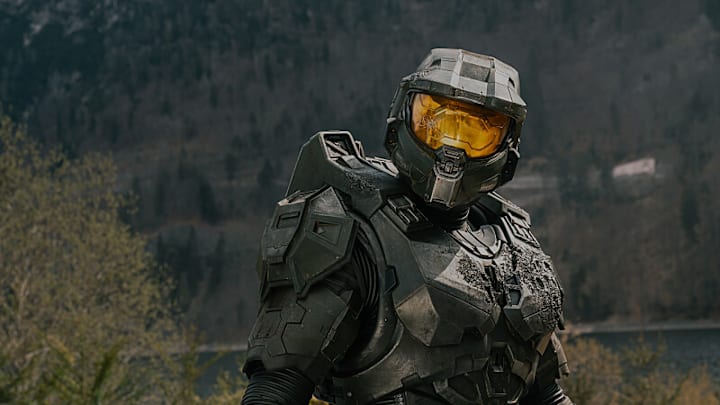Just days after its arrival on Netflix, Halo is already on the Netflix Top 10 list for TV shows to start the month of October. It's a sad reminder of how Paramount+ canceled the series just as it was getting good.
TV history (especially genre TV) is filled with shows that had great first seasons only to sink afterward. Less talked about are shows that had poor or just outright bad first seasons, only to improve as they went and even become great. Star Trek: The Next Generation’s first season is awful, while season 2 saw it slowly gel into a hit.
That season saw Will Riker growing a beard to coincide with this improvement. Since then, “growing the beard” has been a trope used for a series that improves from one season to the next, such is the case with Halo.
It took nearly two decades for the smash hit video game series to finally escape development hell into live-action. After being teased for years as a movie, it arrived on Paramount+ in 2021 as a TV series that had major hype, only to be met by a poor reaction from fans.

Why was Halo season 1 so bad?
The problems with season 1 were plentiful. It often barely seemed to be about Halo. It felt like it was just another generic sci-fi show. Likewise, it wasn’t helped that Master Chief (Pablo Schreiber) removed his helmet in the first episode, ruining some of the mystique for the character.
The season plodded with subplots involving colonies, politics, and aspects more akin to shows like The Mandalorian or The Expanse. The action was decent but nothing too special.
More so, the show failed to understand the characters, culminating in a terrible romance between Master Chief and an underling. Most notably, Cortana, usually a key character of the mythos, got less screen time than some side characters.
Indeed, the show seemed to go out of its way to ignore the source material too much. It didn’t build the Covenant as a threat. The characters didn't match their game counterparts, and the few references to the games were often lazy. Fans wanted Master Chief as the stoic warrior, not someone struggling to rediscover his humanity.
The production also seemed subpar, with “tell, don’t show” storytelling dominating, and failed to resemble what a Halo show should be. The biggest misstep was removing the Great Journey and the motivation for the aliens to attack humans, a massive derailing of the backstory.
Put it all together with a terrible finale and had Halo been canceled at the end of the first season, it would have been written off as just another failed adaptation, which is why it’s so amazing that season 2 marked such an incredible improvement.

Why Halo season 2 was so much better
It’s rare that showrunners take fan derision seriously, but Halo is an exception. Going into season 2, executive producer Kiki Wolfkill did interviews acknowledging all the problems fans had with the first season and did their best to make season 2 a “gift for fans.” They succeeded.
The series was a massive jump in quality on all fronts. It dropped the terrible romance subplot, refocused from the colonies' storylines, and rebuilt the Flood into a serious threat with the memorable episode featuring the destruction of Reach. The action was far grittier and more intense to be in line with the games, upping the stakes and adding to the thrills.
The characters were also improved with Chief being more stoic, Halsey not being as outright villainous, the Spartans given more personality, and the internal strife refitted to serve the story. The effects were also enhanced, as evidenced by Cortana appearing significantly better with improved motion capture for Jen Taylor.
There was still some political stuff, only it worked better, such as ONI’s attempts to cover up how bad the Reach attack was. It was all clicking into a finale that was everything Halo fans wanted, setting up major plot points that would never come with Paramount+ cancelling the show.

Paramount+ should not have canceled Halo
It’s truly sad that Halo was cut short just as it was finally clicking. The season 2 finale had Chief controlling that Frontrunner weapon and the idea of season 3 could have adapted the plot of the first game. In short, it was what the entire series should have been.
It’s frustrating that it took so long for Halo to realize what the fans wanted and give it to them. Had season 2 been the first season, the show would have been a much bigger hit and likely continuing. Instead, that rough first year left a sour taste in the mouths of fans, and many ignored the second season so they missed the improvement.
Still, that strong season 2 finale with all the cliffhangers deserved some closure. A third season could have built on that material and left us with a show worthy of the Halo name. It had a built-in fanbase and all the ingredients to succeed, it just took too long to get to that point. At least, it’s now on Netflix to allow viewers old and new to see how a series can overcome a bad start to become a good show, ending just before it could become great.
Halo is now streaming on Netflix.
